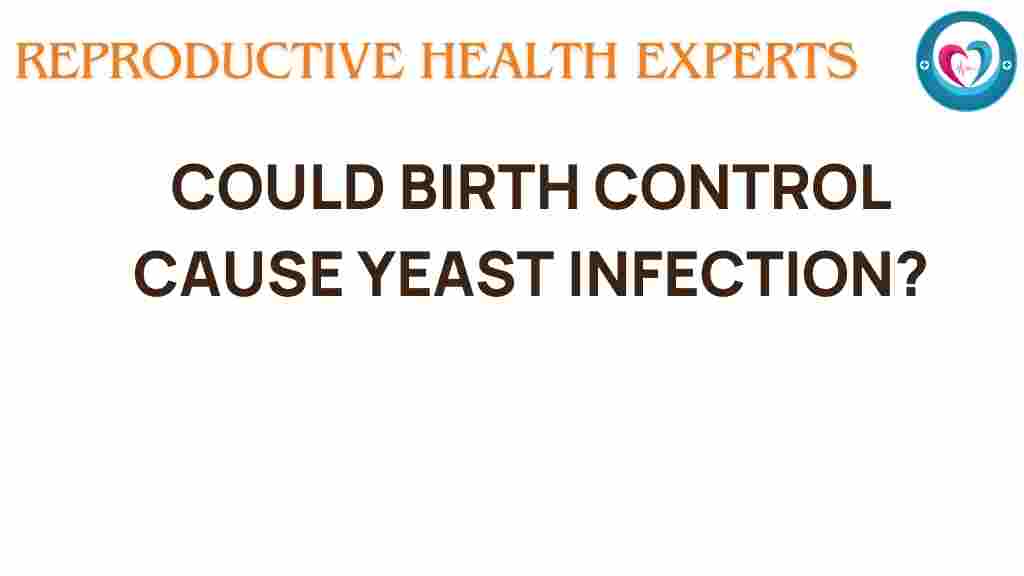Unraveling the Mystery: Can Birth Control Trigger Yeast Infections?
When it comes to women’s health, understanding the effects of birth control on the body is crucial. One common concern among women using hormonal contraceptives is whether these methods can trigger yeast infections. This article aims to unravel the mystery surrounding birth control and its potential link to yeast infections, exploring various aspects including medical research, contraceptive side effects, and health awareness.
Understanding Yeast Infections
Yeast infections, particularly those caused by the fungus *Candida albicans*, are a common issue among women. They can lead to uncomfortable symptoms such as:
- Itching and irritation in the vaginal area
- Unusual discharge that may be thick and white
- Pain during intercourse
- Burning sensation during urination
These infections can occur for various reasons, including antibiotic use, hormonal changes, and lifestyle factors. Understanding these triggers is essential for effective prevention and treatment.
The Role of Hormonal Contraceptives
Hormonal contraceptives, commonly referred to as birth control, work by altering a woman’s hormonal balance to prevent ovulation. These methods include:
- Birth control pills
- Hormonal IUDs
- Implants
- Injections
While these methods are effective at preventing pregnancy, they can also have side effects. One area of concern is their potential impact on the vaginal environment, which may lead to an increased risk of yeast infections.
How Birth Control May Influence Yeast Infections
Research indicates that hormonal changes caused by birth control can affect the vaginal microbiome. The vaginal microbiome is a balance of bacteria and yeast that helps maintain a healthy environment. Disruption of this balance can lead to an overgrowth of yeast, resulting in infections. Key factors include:
- Estrogen Levels: Higher estrogen levels, often seen in women taking birth control pills, can promote yeast growth.
- Antibiotic Use: Many women on hormonal contraceptives may also take antibiotics, which can disrupt the natural balance of bacteria and yeast.
- pH Levels: Hormonal contraceptives can alter the pH of the vaginal area, making it more conducive to yeast overgrowth.
Medical Research on Birth Control and Yeast Infections
Several studies have investigated the relationship between hormonal contraceptives and yeast infections. A notable study published in the NCBI journal found that women using hormonal birth control were more likely to experience yeast infections compared to those using non-hormonal methods.
Another research highlighted the importance of individual responses to birth control. Some women may experience no issues, while others may be more susceptible to infections. Factors such as genetics, lifestyle, and overall health play a significant role in this variability.
Steps to Minimize the Risk of Yeast Infections While on Birth Control
To reduce the risk of yeast infections while using birth control, consider the following strategies:
- Maintain Good Hygiene: Keep the genital area clean and dry. Avoid using scented soaps or feminine hygiene products that can disrupt the natural balance.
- Choose the Right Birth Control: Discuss with your healthcare provider about the type of birth control that may be best for you, considering your medical history and risk factors for infections.
- Probiotics: Incorporate probiotics into your diet. They may help restore the natural balance of bacteria and yeast in the body.
- Monitor Symptoms: Be aware of any changes in your body. If you experience symptoms of a yeast infection, consult your healthcare provider promptly.
Troubleshooting Tips for Managing Yeast Infections
If you find yourself dealing with recurrent yeast infections while on birth control, consider these troubleshooting tips:
- Consult Your Doctor: Discuss your symptoms with a healthcare professional who can provide personalized advice and potential treatment options.
- Consider Alternative Contraceptives: If hormonal contraceptives are a significant contributing factor, discuss non-hormonal options with your provider.
- Stay Hydrated: Drink plenty of water to help flush out toxins and maintain a healthy urinary tract.
- Avoid Tight Clothing: Opt for breathable fabrics and avoid tight-fitting clothing that can trap moisture.
Conclusion: Empowering Women’s Health Through Awareness
In conclusion, while birth control can be an essential part of women’s health, it is crucial to be aware of its potential side effects, including the risk of yeast infections. Understanding how hormonal contraceptives can influence the body helps women make informed decisions about their reproductive health.
Maintaining health awareness, discussing concerns with healthcare providers, and taking proactive steps can significantly reduce the risk of infections. By staying informed and vigilant, women can enjoy the benefits of birth control while minimizing potential complications.
For more information on women’s health and contraceptive options, consider visiting Planned Parenthood, a trusted resource for reproductive health services and education.
This article is in the category Prevention and created by ReproductiveHealthExperts Team
